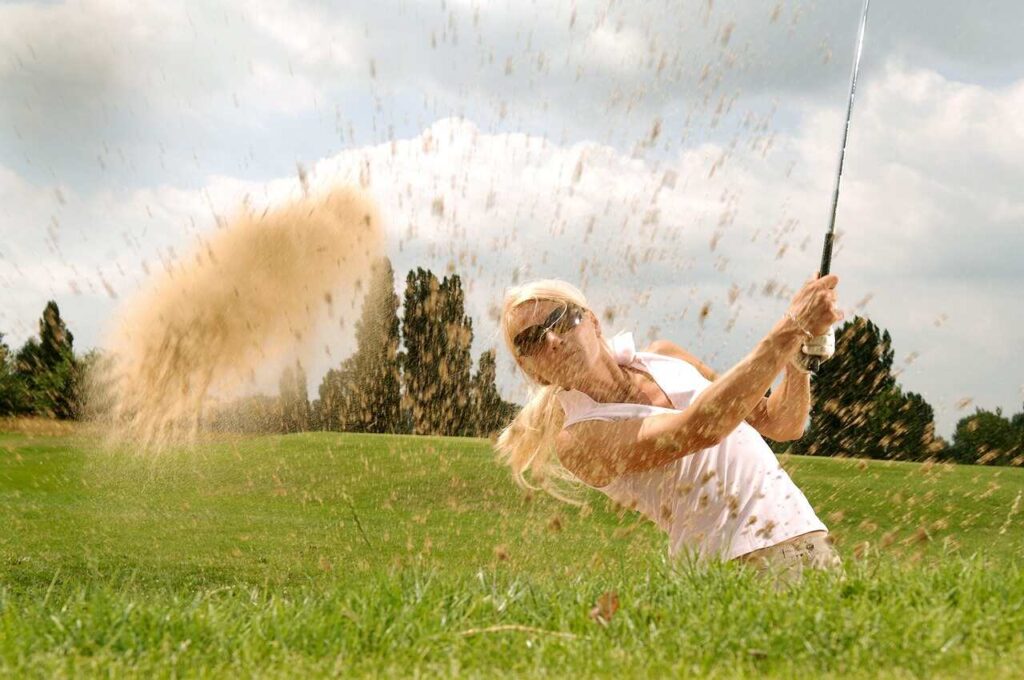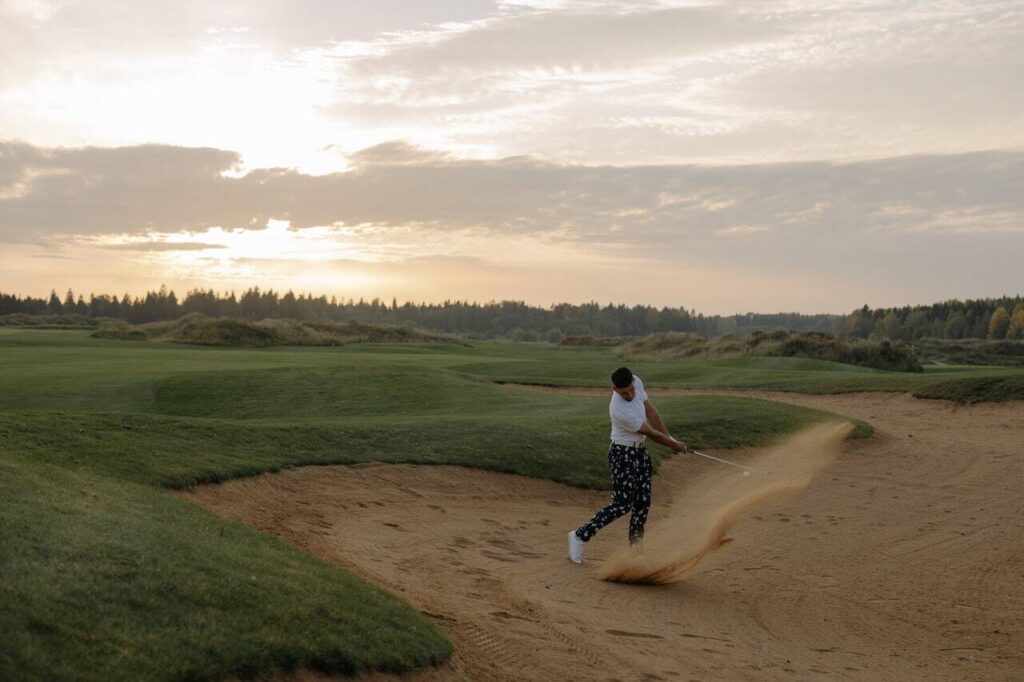Escaping the sands can be one of the most daunting challenges in golf. However, with the right techniques and a solid understanding of bunker play, you can turn this challenge into an opportunity to showcase your skills. In this article we guide with the techniques and tips needed for your bunker mastery.
Table of Contents
Understanding Bunker Mastery Basics
A bunker is a specially designed sand trap that adds a layer of complexity to the game. The key to successful bunker play is understanding the unique characteristics of the sand and how it interacts with your club and ball.
Types of Bunkers
- Greenside Bunkers: These are located near the green and require precision and control to land the ball close to the hole.
- Fairway Bunkers: Found along the fairway, these bunkers often require longer shots to reach the green or fairway.
Sand Characteristics
- Soft Sand: Easier to generate loft, but can result in fat shots if not careful.
- Firm Sand: Requires a more precise strike to avoid skimming the ball.
Essential Bunker Techniques for Bunker Mastery
Setup and Stance
- Open Stance: Stand with your feet slightly open (aiming left of the target for right-handed golfers). This helps create a steeper swing path.
- Ball Position: Position the ball slightly forward in your stance. This encourages a higher trajectory and ensures you hit the sand first.
- Weight Distribution: Place more weight on your front foot (about 60-70%). This helps you maintain balance and ensures a downward strike.
Grip
- Light Grip Pressure: A lighter grip allows for better feel and control. Ensure your hands are working together and not too tense.
Club Selection
- Sand Wedge: Typically, a sand wedge with a loft of 54-58 degrees is ideal for most bunker shots. The bounce on the wedge helps it glide through the sand without digging in.
The Swing
- Backswing: Take a slightly longer backswing with a full wrist hinge. This helps generate enough speed to propel the ball out of the bunker.
- Impact: Focus on hitting the sand about 1-2 inches behind the ball. The goal is to splash the sand, lifting the ball out on a cushion of sand.
- Follow-through: Allow for a complete follow-through. A full follow-through ensures you have enough momentum to get the ball out of the bunker.
Specific Techniques for Different Bunker Shots
Greenside Bunker Shot
- Open Clubface: Open the clubface to increase loft. This helps the ball pop up quickly and land softly on the green.
- Splash the Sand: Imagine you’re splashing the sand out of the bunker. This visualization helps you focus on hitting the sand rather than the ball.
Fairway Bunker Shot
- Ball Position: Position the ball slightly back of center to ensure clean contact.
- Stable Base: Keep your lower body stable to prevent slipping. Dig your feet into the sand to create a solid foundation.
- Controlled Swing: Use a more controlled, steady swing to ensure clean contact and avoid skimming the ball.
Practicing Bunker Shots for Your Bunker Mastery
Practice Drills
- Splash Drill: Draw a line in the sand and practice hitting the sand at the line. This drill helps you develop consistency in where you strike the sand.
- Distance Control Drill: Place targets at varying distances and practice hitting bunker shots to each target. This helps improve your distance control and accuracy.
Mental Approach
- Stay Positive: Maintain a positive attitude and confidence in your bunker play. Visualize successful shots and focus on your technique.
- Routine: Develop a consistent pre-shot routine for bunker shots. This routine helps you stay focused and calm under pressure.
Advanced Bunker Tips for Your Bunker Mastery
Varying Sand Conditions
- Wet Sand: Use less bounce and focus on a more precise strike to avoid the club bouncing off the firm sand.
- Deep Bunkers: Open your stance and clubface more to generate extra loft. A steeper swing path can help get the ball out of deep bunkers.
Reading the Lie
- Fried Egg Lie: For buried lies, close the clubface slightly and focus on a steeper angle of attack to dig the ball out.
- Fluffy Lie: For lies where the ball is sitting up, use a normal bunker setup and swing, but be mindful of not going too deep under the ball.
Final Thoughts on Bunker Mastery
Mastering bunker shots requires practice, patience, and the right techniques. By focusing on a proper setup, consistent swing mechanics, and a positive mental approach, you can escape the sands with ease and confidence. Remember, the bunker is not a trap to fear but an opportunity to showcase your skills. Happy golfing!

Unique FAQs: Bunker Mastery
What is the key difference between hitting from a greenside bunker and a fairway bunker?
The key difference lies in the approach and technique. For greenside bunkers, the goal is to get the ball high and land it softly on the green, so you use an open clubface and a steep swing path. For fairway bunkers, the objective is distance and accuracy, so you use a more controlled swing with a slightly back ball position to ensure clean contact.
How can I avoid hitting the ball thin from a bunker?
To avoid hitting the ball thin, focus on striking the sand 1-2 inches behind the ball. Maintain a consistent wrist hinge and ensure your weight is slightly forward. Practice the splash drill, which helps you hit the sand rather than the ball, ensuring a proper loft.
Why do I often leave the ball in the bunker?
Leaving the ball in the bunker is usually due to insufficient clubhead speed or hitting the sand too far behind the ball. Ensure you take a full, committed swing with a complete follow-through. Focus on accelerating through the sand and maintaining an open club-face to get the ball airborne.
How do I handle a buried lie in the bunker (fried egg lie)?
For a buried lie, close the clubface slightly and use a steeper angle of attack. This approach helps you dig the ball out of the sand. Aim to hit closer to the ball, and use a more forceful swing to ensure the ball gets out of the bunker.



